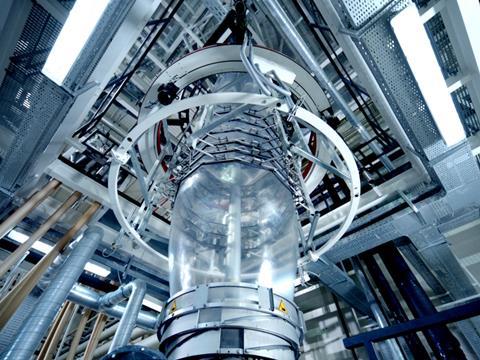
In this edition of the Spotlight, Dr. Betül Türel Erbay, Head of Sustainable Packaging Development at Huhtamaki, unpacks the company’s vision for true circularity in flexible packaging.
The starting point is clear: today’s global supply chains for food and everyday essentials would cease to function without packaging, including flexible packaging. What steps do we need to take, then, to put an end to the harmful impact of packaging waste on the environment?
Choosing the right material for functionality and application is the first step
There is a reason why so many food, pharmaceutical and personal care products are packed in flexible plastic packaging today. It is very lightweight yet durable. It provides high barrier properties, protecting the contents and extending shelf life, both of which are key in delivering safe and hygienic products to consumers across the world. Indeed, what makes flexible plastic packaging stand out is the balance it strikes between minimizing both material use and greenhouse gas emissions during the lifecycle of the product, while not compromising on the level of protection needed. This is shown in various analyses comparing the overall environmental impacts of different packaging materials.
The major issue to solve – unrecycled plastics which leak into the environment – is a consequence of the largely short ‘in-use’ lifetime of flexible packaging averaging less than a year, as well as a lack of consistent recycling of post-consumer packaging. Given the critical benefits of flexible packaging, solving the issue of low plastic recycling rates is key to tipping the balance of plastic packaging even further towards the positive. Huhtamaki is fully committed to delivering 100% recyclable packaging. However, to ensure that this brings immediate benefit, increased investment into expanding the coverage of plastics recycling streams must happen in parallel with the supply chain shifting to more easily recyclable packaging structures.

For some applications, we can and should consider paper-based options as an alternative to plastic. Huhtamaki has launched a paper-based solution for flexible packaging that is particularly suitable for dry, relatively lightweight products, while still maintaining the protective barrier in a manner comparable to aluminum. This has been made possible without the need to compromise on recyclability.
At Huhtamaki we believe the shift to mono-material structures is key to plastic packaging recyclability
By driving a rapid shift to the use of mono-materials in flexible packaging, we can reduce its complexity and increase the yield in current recycling processes. Designing and testing for recyclability also helps scale up recycling streams.
As an industry, we should set a high standard for what gets to be described as a mono-material flexible package. At Huhtamaki, we will not be satisfied until we offer flexible packaging that reduces the volume of plastic required, and is at least 95% mono-material overall, thus maximizing material efficiency and recyclability, and doing so at scale. We want to deliver the same package and barrier performance, whilst ensuring accessibility and affordability. Consumers’ and customers’ expectations are high, and we are working to ensure there is no trade-off between quality and sustainability.
Achieving this while simultaneously maintaining barrier performance, printability, sealing properties and competitiveness is not straightforward. But we believe it can and should be done.
In addition to an increased use of PCR, we need a broader view on the circularity of plastics
We are also looking into the use of post-consumer recycled (PCR) and post-industrial recycled (PIR) plastic in flexible packaging. At Huhtamaki, we already integrate mechanically and chemically-recycled plastics into customer packaging applications such as home care, personal care and pet food—and we are eager to do more of this, where possible.
More investment and innovation in recycling infrastructure will be key to speed this up. A limiting factor today is the supply and affordability of PCR material of sufficient quality. An additional consideration is the fact that contact sensitive packaging, such as food packaging, cannot use most mechanically recycled PCR polymers today. Chemical recycling will likely help here once it is scaled up but reaching scale will take time. In the meantime, what else can we do?
We should promote a more systemic approach to circularity that covers the full value chain of plastics, in addition to exploring PCR usage in packaging. There exist many ways of making use of recycled flexible packaging in other industries where plastic enjoys a longer lifecycle, thereby eliminating the issue of degradation over multiple recycling rounds, as well as the problem with contact-sensitive requirements. A broader perspective here can open avenues for new innovations.
By working together with our customers, we are redesigning the future for full flexible packaging circularity. We are excited to be part of the journey!
This content was sponsored by Huhtamaki.
















No comments yet